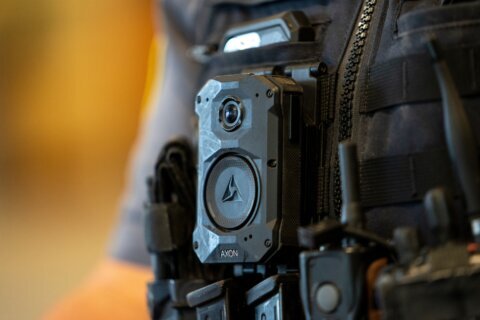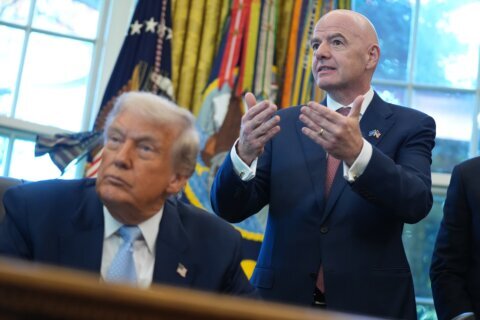INDIANAPOLIS (AP) — Sam Schmidt is on the track again in Indianapolis.
The once-popular IndyCar driver was left a quadriplegic in a racing accident in 2000. On Sunday, he took to the famed oval in a 2014 Corvette C7 Stingray adapted to his needs.
He completed a modified four-lap run in a car bolstered by infrared sensors and other cutting-edge technology that allowed him to steer, brake and turn.
“The first time I got in the car, it felt normal,” the IndyCar team owner said. “Driving the car, controlling the car, was the most normal I’ve felt in 15 years.”
The car uses an advanced infrared camera system, a bite sensor and a GPS system to steer the car around the track. Schmidt averaged 73.712 mph on his 10-mile run, hitting 97 mph down the main straightaway.
Schmidt’s zest for racing has never waned.
The Californian vividly remembers watching guys like Rick Mears winning the Indianapolis 500, envisioning the moment he would make it to the cherished Victory Lane.
His quest officially began in 1997 when Schmidt made his IndyCar debut. Three years later, he was severely injured in a crash in Orlando, Florida, that cost him the use of his arms and legs.
But with a team of some of the best engineers in the world and a nine-month project known as “SAM” or semi-autonomous motorcar gave Schmidt a chance to get back behind the wheel at a venue that has always embraced innovation.
Indianapolis businessman Carl Fisher originally designed the 2.5-mile oval at Indianapolis Motor Speedway to help the U.S. stay competitive in automobile design and craftsmanship. Cars came to Indy to push the limits and test their speed and durability, and more than a century later, they’re still doing things once thought impossible.
How does it work?
A highly-technical series of algorithms controls the vehicle. Four sensors mounted on the driver’s helmet are connected to infrared cameras mounted on the dashboard. They detect his head tilt motions to aid in steering and acceleration. The driver also has a bite sensor device in his mouth, and the pressure of his bite helps control the car’s braking and steering. The GPS keeps the car within 1½ meters from the edge of the track.
The car was designed in a collaborative effort with Arrow Electronics, Ball Aerospace, the Air Force Research Laboratory and Falci Adaptive Motorsports, could help others with disabilities enjoy the same feeling Schmidt has had while testing the vehicle. Schmidt said he’s turned about 25 total laps during the project.
The overall safety system of the car is comprised of a series of software algorithms that are real and defined within the vehicle’s limiting capabilities.
Being part of the design of the vehicle for Schmidt has been, well, pretty cool. Add in some will power, and you’ve got the making of something that reveals the future of automobile design is now.
“The last nine months has been an amazing experience,” he said. “All you have to do is read the biographies of the engineers and the people involved in this program. It is way beyond my IQ, I can tell you that. We make the comment a lot, ‘It’s not rocket science.’ In this situation, it absolutely is rocket science.”
While it takes Schmidt about 2½ hours to get ready each morning.
But he doesn’t let much stand in his way. For many people, he’s still provides inspiration.
“We get a ton of emails and correspondence from folks who maybe didn’t want to leave their house or didn’t know what they could do with their disability,” Schmidt said. “I’m a firm believer that everything happens for a reason. I think the reason I’m sitting here today without the use of arms and legs is so I can look somebody in the eye and say, ‘Get up off your butt and be a productive member of society.’
And now he’s showing them he can even take a car around one of the world’s best-known race tracks.
“A lot of emotions stem from being at the Indianapolis Motor Speedway,” Schmidt said. “It was constructed primarily for automotive innovation. For me, this is a full-circle moment.”
Copyright 2014 The Associated Press. All rights reserved. This material may not be published, broadcast, rewritten or redistributed.







